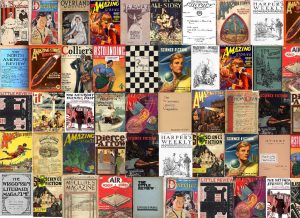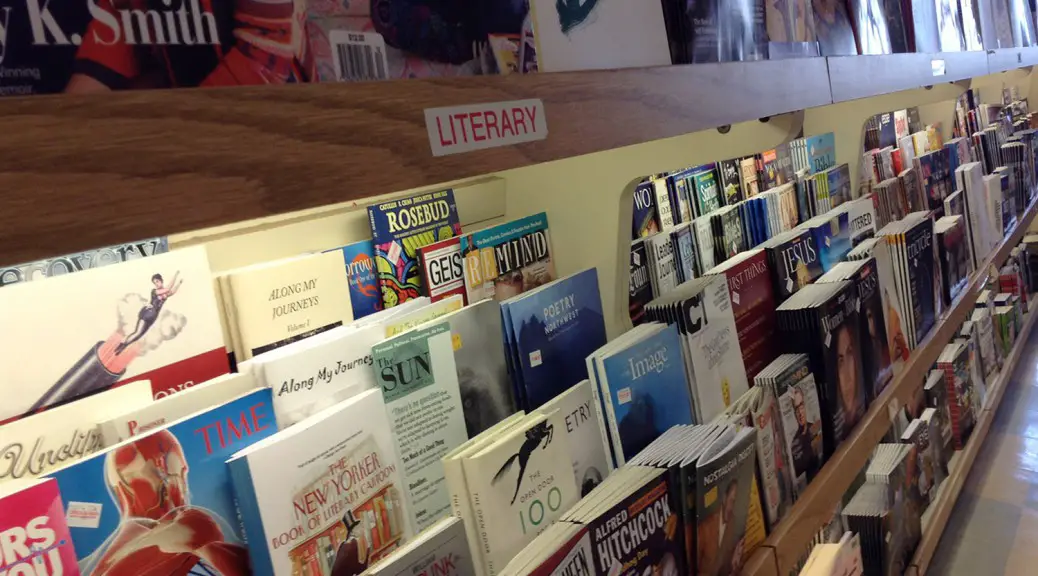Embracing Rejection
When it comes to literary magazines, rejection is success.
By Olivia Buzzacco, Bowling Green State University
As a creative writing major, you are told countless times by peers and faculty to submit your work to literary magazines, as it’s a great way to get started in the creative writing world.
In fact, each creative writing introductory course I took my sophomore and junior year all told me the same thing—submit your work to places. My instructors showed me and the rest of my cohorts where to look for magazines and how to go about writing a cover letter for submissions.
 Sophomore year Olivia rejected the whole idea of submitting to literary magazines. After just switching my major over to creative writing that same year, I figured I was too new to poetry and fiction and knew my work wouldn’t be accepted anywhere. I wasn’t George Saunders yet. Junior year Olivia, however, thought she was a much better writer, and decided to take the risk.
Sophomore year Olivia rejected the whole idea of submitting to literary magazines. After just switching my major over to creative writing that same year, I figured I was too new to poetry and fiction and knew my work wouldn’t be accepted anywhere. I wasn’t George Saunders yet. Junior year Olivia, however, thought she was a much better writer, and decided to take the risk.
The brutal truth? For the 5 times I have been published, I have 75 rejections.
75 should seem overwhelming, but this number is perfectly normal, more or less. And rejections go the same way for the majority of writers looking for publications. Laura Maylene Walter, writer and former MFA student at Bowling Green State University, discussed the art of lit mag rejections nicely in her blog for
“The Kenyon Review.” In 2015, Walter received 12 acceptances to her 215 rejections (and she’s a brilliant writer).
Those statistics are enough for any aspiring writer to say, “That’s it, I quit.” But honestly? It’s great to be rejected. In a world where any kind of rejection sucks, literary magazine rejections are one kind that shouldn’t be taken too hard. Countless writing instructors told me and the other aspiring BFA’s at the time that aspiring creative writers had to be able to handle criticism and rejection to be in the creative writing program. So know now that you have to have a good head about rejections, and most of all, you have to be patient. Very, very patient. And your patience can be very rewarding in the end.
Literary magazine rejections make you want to work harder and harder. Those rejections get you to revise your work. If anything, a rejection shouldn’t discourage you from writing, a rejection is encouraging you to keep on. As a current fiction editor for the literary journal “Mid-American Review,” I can say that it is not and never is the magazine’s intent to discourage you and make you want to quit writing forever.
If one magazine won’t take your best poem or story, another will. But of course, know that publications can take a lot of time. As she wrote in her blog, it took Walter 36 rejections to have one of her stories accepted. That’s not to say every writer will go through this for every piece of work they submit. I’ve had poems and stories accepted on the first try, but I also have a handful of stories that are so close each time but never seem to make the cut. The writing world is very unpredictable, but Walter puts it nicely: “Maybe we all need confirmation that this writing business is hard, that rejection is a reality, and that even writers who seem well published or lucky get repeatedly rejected, too.” So another reason to love rejection: you know you’re not alone. All the other writers of the world are getting rejected right alongside with you.
There are all different kinds of literary magazine rejections—no two rejections are alike. There are several posts from writers and publications, such as “Ploughshares,” which discuss the four different tiers of rejection and what they mean. There are others, like Nathanial Tower, who go on to dissect these four tiers and break them into ten.
Some rejections certainly feel harsh (I actually had one magazine tell me flat out my submission “sucked”), but others can be extremely encouraging.
So sometimes, the rejection can be rewarding.
Some editors send really nice rejections and will ask you to submit to their magazine again. Some editors will even give you feedback—this happened to me last fall, and showed me the editors really enjoyed my story, despite having rejected it in the end. Instead of viewing it as an “Aw shoot, here’s all the things they hated about my story,” I saw it more as, “Shit they really liked it enough to give me actual feedback on it instead of just saying ‘nah we good here.’”
Rejections can also be enjoyed on a wider level. You can make a contest out of literary rejections. Walter briefly mentions this in her blog, “And during the MFA, I launched a rejection contest for my cohort—and even won it one year.” In fact, her literary rejection contest inspired my good friend and former BFA pal Zach to do the same thing for our group of BFA friends. The rejection contest got me to start submitting a lot of my work out, as everyone included in the contest would share lists of magazines that were accepting work in the coming months. I honestly wouldn’t have my 75 rejections if it wasn’t for our rejection contest, and I most definitely wouldn’t have my current publications either.
In short, rejections encourage you to look back at your work and see how you can make it better. Rejections also push you to find the perfect home for your poem/story/essay baby. As strange as it may sound, and even if it does suck to receive no after no, magazine rejections are here to help you out. Don’t stop submitting. Keep on writing. Take pride in your rejection to acceptances ratio, no matter how unbalanced it may be.










